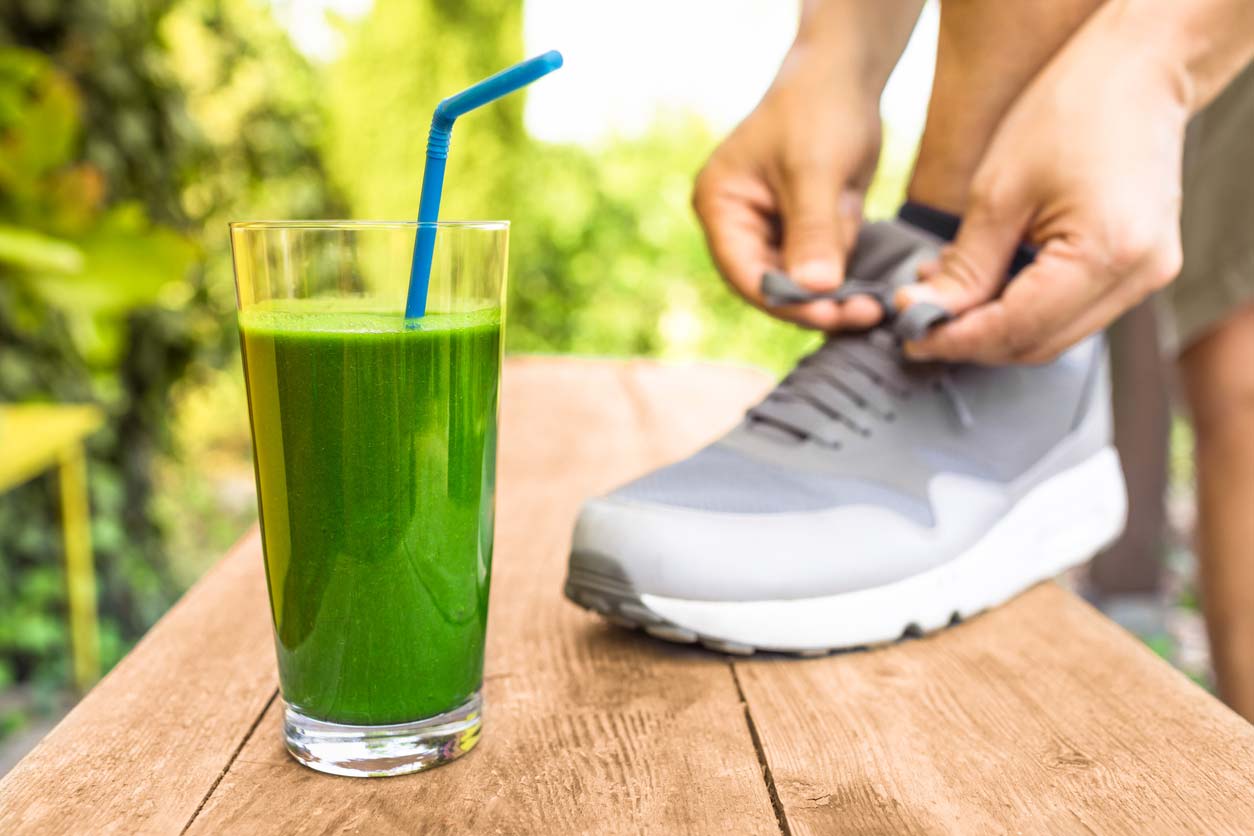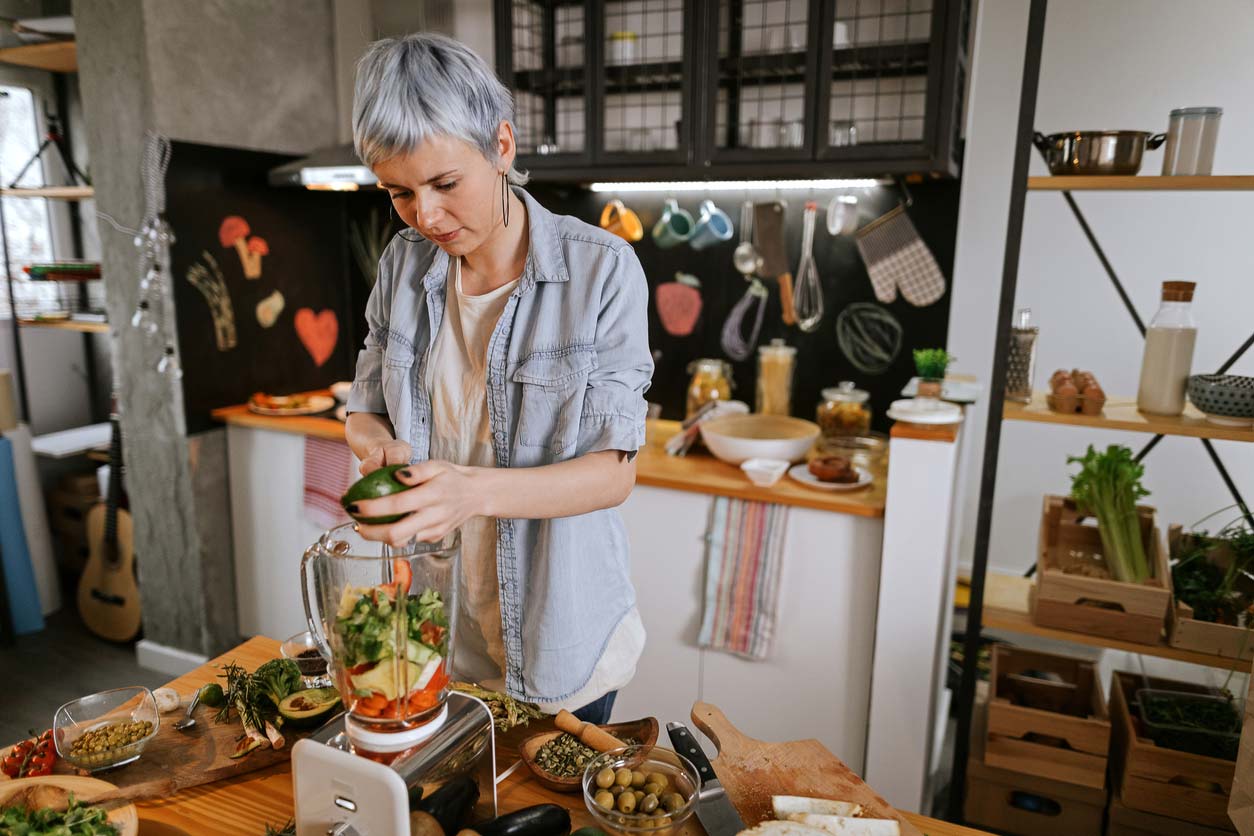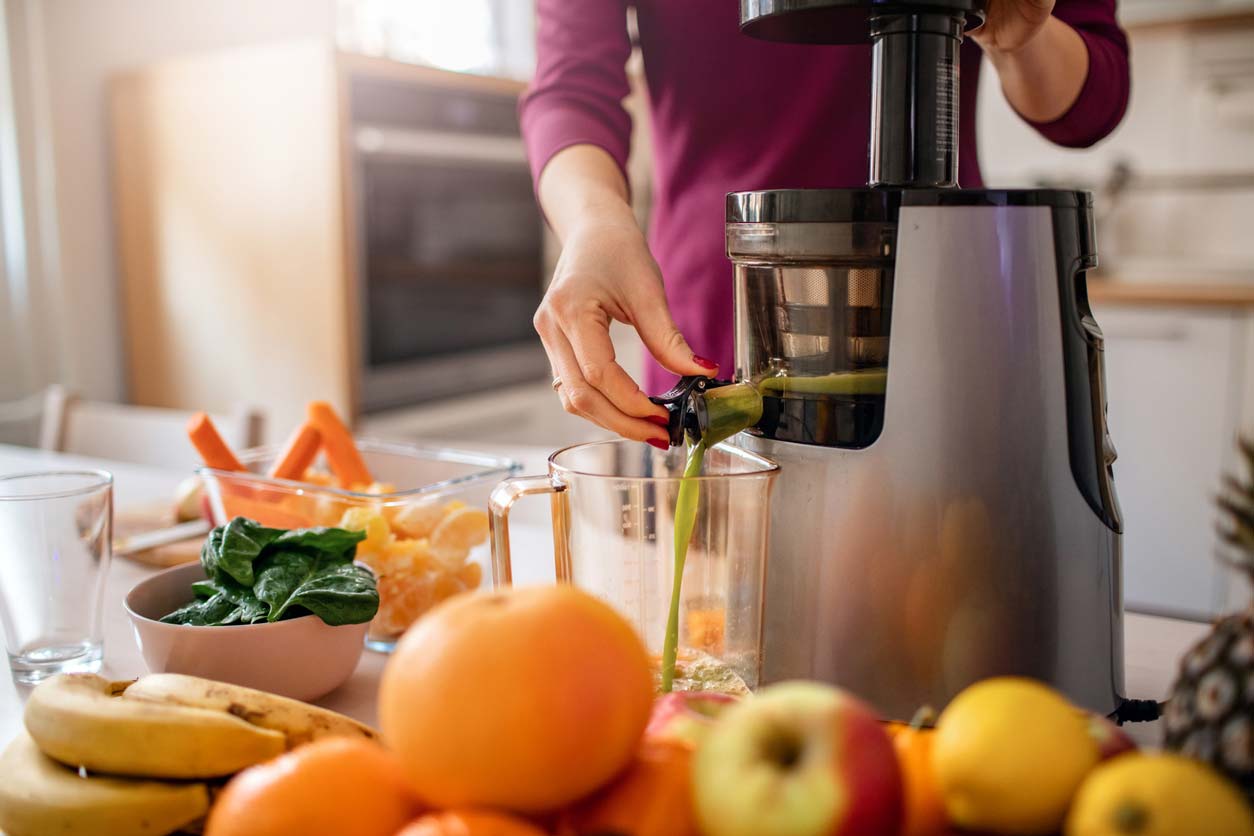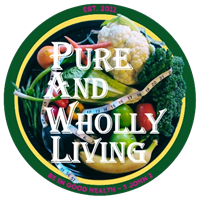Does getting 10 servings a day of fruits and vegetables sound like a tall order? For many of us, it can be. In fact, most Americans consume fewer than three servings a day. If you’re not getting that magic 10, there are a few things you can do. One, of course, is to make an effort to add portions of fruits and vegetables to your diet. You can substitute fresh fruit for sugary or salty baked snacks, for example, and prioritize potatoes and green beans over steak and waffles on your dinner plate. You can, also, take convenient fruits, vegetables and berries in a capsule. But even with the best of intentions, it can be a challenge to consume all those servings of fruits and veggies day in and day out.
That’s where juicing and blending can ride to the rescue. Drinking is often quicker, easier, and more convenient than eating. Putting your produce through a juicer or blender can be an effective way of getting more of those daily servings into your body, where they can protect you from disease and assist you in achieving vibrant health.
If you’re a picky eater who grew up on animal-derived and highly processed foods, juicing and blending can be great ways of getting the benefits of plant foods without having to really engage with them in terms of taste or texture. A recent found that even preschoolers will consume dark green leafy vegetables if they’re blended into green smoothies where the taste of the greens is disguised by sweet fruit. And juicing, in particular, can be a nutrient concentrator: the vitamin and mineral content of one cup of carrot juice is almost equivalent to that of five cups of chopped carrots. (That’s a lot of carrot munching!)
Juicing and blending are obviously efficient ways of converting mounds of plant food into easy-to-consume portions. But when it comes to blenders vs. juicers, what are the pros and cons of each? Is juicing or blending good for you? And are there downsides to all that processing?
Benefits of Blending vs Juicing

Believe it or not, there are actually some documented health benefits to both blending and juicing.
Disease Fighting Benefits
For one thing, both blenders and juicers increase the bioavailability of phytochemicals from many raw plant foods by reducing the size of the food particles and increasing their surface area. One study of Korean kernel fruit (apples, pears, persimmons, and mandarins) found that blending increased their antioxidant properties while juicing increased vitamin C bioavailability. Of course, the best way to reduce the size of the food that makes it into your stomach is to eat slowly and chew thoroughly. But for many of us, that’s a challenging (and time-consuming) habit to adopt.
However, the more phytochemicals we eat, the lower our disease risk, especially for conditions like heart disease, type 2 diabetes, cancer, and neurodegenerative diseases like Alzheimer’s and Parkinson’s.
Because blending and juicing typically use raw produce, they can provide significantly more phytochemicals that usually degrade when cooked. For example, isothiocyanates are phytochemicals found in cruciferous veggies that have powerful anticancer effects.
Heart Health Benefits
There’s good evidence that drinking fruit and vegetable juices can also specifically protect against heart disease, primarily through lowering blood pressure and improving the blood lipid profile (basically, lowering LDL cholesterol and triglycerides).
Gut Health Benefits
Juicing may also benefit the gut microbiome. In 2017, a team at the UCLA medical school took 20 healthy adult volunteers and gave them nothing but vegetable and fruit juice for three days, after which they followed their regular diets for two weeks. At the end of the study, there was a significant increase in the populations of “good” gut bacteria, including the ones associated with weight loss, increased vasodilation (opening of blood vessels) through nitric oxide production, and reduced free radical production from blood lipids. A triple win, from just three days of juicing!
Anti-Inflammatory Benefits
There’s some evidence that plant-rich smoothies may help reduce inflammation associated with autoimmune diseases. One pilot study that’s currently underway is including a morning smoothie as part of a protocol to decrease pain and joint swelling in people with rheumatoid arthritis.
Pros & Cons of Blenders & Smoothies

So far we haven’t really differentiated between blenders vs juicers and blending vs juicing. In fact, they’re both quite different. Let’s look at the pluses and minuses of blenders and blending first.
So far we haven’t really differentiated between blenders vs. juicers and blending vs. juicing. In fact, they’re both quite different. Let’s look at the pluses and minuses of blenders and blending first.
Pros of Blending
Both juicing and blending take a food and pulverize it. Juicers separate the juice from the pulp, so the pulp can be discarded. But blenders make use of everything. And that can be a good thing because the main component of the pulp that juicers discard is fiber. Blended fruits and vegetables retain all their fiber, a key nutrient for healthy digestion and chronic disease prevention. Fiber is precious, especially considering that fewer than 5% of all Americans consume the recommended daily amounts of fiber.
The pulp that juicers waste and blenders preserve also provides an abundance of flavonoids, which are a potent class of phytonutrients. One study compared the phytonutrient content of blended vs. juiced grapefruit and found that blended grapefruit, with both juice and pulp, contained seven times the amount of naringin, a potent flavonoid that fights cancer and inflammation, and may be effective in treating type 2 diabetes and other metabolic diseases.
If you’re watching your weight, smoothies are more filling than juices, thanks to all those fibrous parts of the fruits and vegetables that trigger those “that’s enough, thank you” signals from the stretch receptors in your stomach. One way to make smoothies more satiating is to add some form of healthy fat, like avocado, seeds, or nuts. The fat will slow down the absorption of the sugars in the fresh fruit, so you can stay full longer, and not suffer from a sugar spike and subsequent crash.
And maybe it shouldn’t matter as much as it does, but blenders are definitely easier to clean than juicers. They don’t have lots of parts to disassemble, scrub, dry, and reassemble. And if you’ve ever watched a Blendec demo, you know about the trick where you fill the dirty blender container with soapy water, snap on the lid (don’t forget the lid, unless you like soap suds on your ceiling!), and run the blender for 15 seconds to remove all food particles and stains.
Cons of Blending
While they aren’t prone to spiking your blood sugar nearly as much as juices, sweet smoothies can still raise blood glucose levels and contribute to metabolic syndrome. Since smoothies are liquid meals, we can consume them too quickly, and therefore take in excess calories before we’re aware of being full.
Additionally, humans evolved to chew our food well and slowly. The fruits, roots, and leaves our ancestors ate were far more fibrous than the gentle peaches, plums, and apples that we’re all used to. Smoothies reduce the need for chewing even further, which can mean weaker masseter muscles and underdeveloped oral cavities, especially in babies and small children. Nitric oxide, the vasodilator chemical that you get from leafy greens, gets metabolized by enzymes and bacteria in your saliva. Skip the chewing, and you reduce your intake of this wonderful nutrient.
If you make your own smoothies, you can maintain complete control over the quality of ingredients they’re made of. But that’s not true if you drink commercially blended smoothies from restaurants, airport kiosks, or supermarket beverage cases. Those products, designed to appeal to consumer taste buds, may contain unwanted ingredients like refined sugar, high fructose corn syrup, and natural and artificial flavorings or colorings. And they rarely if ever use organically grown fruits or vegetables.
Blender Types & Recommendations
Are you up for blending? If so, you’ll need — drum roll, please — a blender. There are several different styles that will fit different needs and budgets.
Stick Blenders
The least expensive, smallest, and least powerful is the immersion or “stick” blender. These blenders are best for sauces and dips, and for pureeing hot ingredients like soups, that you don’t want to blend in a container while boiling hot.
Single-Serving Blenders
Slightly bigger and more powerful, this style typically comes with a container that you can drink from since the blade is housed in the base. These also come with lids, so you can take your smoothie on the go.
Kitchen Blenders
The regular old kitchen or full-size blender — the one you probably picture when you think “blender.” These babies sit on the countertop and can handle most blending tasks. One cool thing about them is the creative labels for the various settings: blend, grind, pulverize, liquify, crush. Make sure you get one whose motor can handle whatever you plan to throw at it. If your smoothies will involve ice or frozen fruit, look for a higher wattage on the motor, and check online reviews for durability.
Specialty Blenders
Finally, drumroll, please…my favorite…the sovereign of the blender world is the specialty or combo blender. These extremely powerful mechanisms can easily blend frozen stuff. One brand even advertised its prowess by destroying iPhones, iPads, and camcorders in its whirring blades. (As fun as that sounds, I don’t recommend it.) While you might get sticker shock if you’re used to blenders in the $30-$100 dollar range, Blendec blenders are probably the best overall value when you factor in the lifetime cost of ownership.
Pros & Cons of Juicers & Juice

Juicing is a process that extracts water and nutrients from produce while discarding most of the fiber. As with blending, there are pros and cons to this process.
Pros of Juicing
Juicing concentrates the nutrients, as the vast majority of the vitamins and minerals in fruit are typically in the juice — not the pulp and fibrous material. As a result, juicing can increase the quantity and bioavailability of antioxidants like vitamin C for better absorption. Also, it’s easier for people with impaired digestion to assimilate nutrients in juices than in whole fruit or blended smoothies.
Because fiber binds to the sugars in fruits and vegetables and slows down their digestion, juicing can provide a quicker dose of energy. While most of us don’t need a sugar rush, athletes who will be metabolizing lots of calories in a short time can benefit from drinking juice right before an event. Beet and cherry juices, in particular, have been investigated as performance enhancers in athletes.
Cons of Juicing
Juicing isn’t all moonlight and roses, however. As we saw, juicing removes most of the fiber, which means rapid absorption of sugar into the bloodstream. As a result, you may experience sugar spikes, which can tax the insulin system, followed by sugar crashes, which can include symptoms as varied as fatigue, irritability, lightheadedness, dizziness, and anxiety, among many others.
Juice also may not be as satiating as solid food or blended food, which can lead you to consume more than you would otherwise. That can be a problem, especially with juices that are high in sugars, as they can pack a lot of calories into a small (and rapidly consumed) volume.
Consider apple juice: you can drink a cup in a few seconds. While it would take you a lot longer to consume the equivalent number of medium-sized apples (three, as it turns out). And you’d probably get full somewhere on your second apple. While a cup of juice won’t even tickle your “full-o-meter.”
Also, there’s a big difference between commercial juices and fresh, raw juice. Commercial juices, like commercial smoothies, may contain unhealthy ingredients. Commercial fruit juice, in particular, turns into little more than junk food when it’s pasteurized and filtered. Vegetable juice doesn’t suffer the same fate and can be a potent way to absorb nutrients swiftly.
Juicing also wastes a lot of valuable nutrition. The pulp that gets thrown away when you clean your juicer includes fiber and other nutrients that bind to it.
And finally, juicers are often messy and take a fair amount of time and effort to clean thoroughly, which may mean they get used less in the long run.
Juicer Types & Recommendations
Just as with blenders, there are various kinds of juicers. The three types competing for your dollars and counter space are auger/low-speed, centrifugal, and masticating juicers.
Auger Juicers
The auger/low-speed models spin, as you might have guessed from the description, juice slowly. This keeps the heat low, which means your juice will be truly raw. They have a pretty small footprint on your counter and eject their pulp to the side.
Centrifugal Juicers
More common, and less expensive, are the centrifugal juicers, which essentially extract juice with a combination of grating and rotating really fast. The pulp goes down, while the lighter liquid gets spun out like a kid on a Gravitron carnival ride. Because of the quick processing time, these are the least efficient at getting the maximum nutrition from your produce.
Masticating Juicers
Next, there are the masticating juicers, which feature a horizontal auger that crushes and grinds the produce under great pressure, extracting perhaps the maximum nutrition of any of the types.
Blenders vs Juicers — Now You Know

Whole plant foods are wonderful. We could all stand to eat more fresh fruits and vegetables. And blending and juicing them can help you get more of them. While you do miss out on the benefits that come from chewing — and if you’re juicing, you also miss out on the fiber — both blending and juicing provide easy ways to get valuable nutrition, especially antioxidants. And they can also be fun and flavorful ways to change up what you’re eating. Each has advantages and drawbacks, but whether you’re Team Blender or Team Juicer, both can play a part in contributing to a healthy, convenient, and delicious life.
Which do you prefer, juicing or blending? Tell us in the comments.
Adapted by Food Revolution
